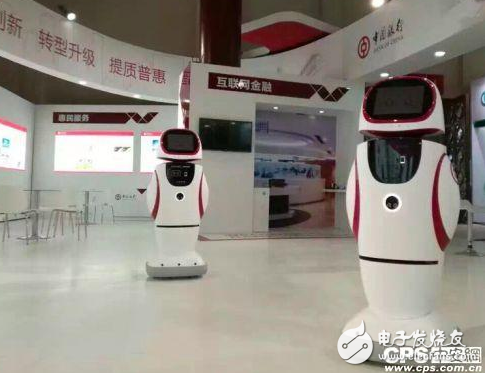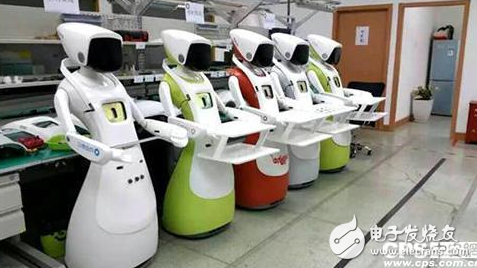In recent years, with the continuous development of artificial intelligence, big data, sensor navigation and other technologies, the era of robots has quietly come! Whether it is the efficient automation of industrial robots in handling, palletizing, welding, sorting, etc., or the convenient intelligence of service robots in the fields of home, medical care, education, and entertainment, robots have been integrated into all aspects of people's production and life.

Humanoid robot development meets people's demands
However, the current robots, whether in appearance or intelligence, are far from what people imagined. Many people cannot understand why a robotic arm or a robot can be called a robot. More people understand that robots are those similar to "terminator" images in science fiction movies that have human appearance, human affinity, and human flexibility.
For ordinary consumers, the cold mechanical materials and tooled appearance of the current robots are easy to give people a sense of distance. The human-computer interaction that is not natural and smooth and the emotional system that they have not yet possessed also make people feel that they are not smart enough, which cannot be moved. The human factor may have little impact on industrial robots used in the manufacturing industry, but it is very critical for service robots that integrate into people's lives and have long-term dealings with humans.
It is precisely because of this reason that many home service robots have not been promoted and widely accepted for a long time. In this context, many countries and companies have begun to devote themselves to the development and application of humanoid robots in order to satisfy people's increasing consumer demands on the one hand, and to promote the value promotion of the robotics industry on the other.

Humanoid robots at home and abroad have been developed for many years
It is understood that a humanoid robot is a complex product integrating machinery, electricity, materials, computers, sensors, control technology and other disciplines. The development of its technology represents the high-tech strength and development level of a country. Therefore, my country and the world Developed countries do not hesitate to invest huge sums of money in development and research.
Since its development in the 1960s, the research and development of humanoid robots at home and abroad has been carried out for a long time. At present, certain achievements have been made in the three directions of gait analysis, artificial intelligence, robot positioning and environmental maps. Among them, Japan's research on humanoid walking robots is relatively mature, and the United States has achieved fruitful results in its artificial intelligence. Although my country started late, it has also made good breakthroughs in the research of robot environment maps.
From the perspective of the overall development process, Japan can be said to be a global leader in the development and production of humanoid robots. On the one hand, it has a certain relationship with its culture and animation industry, and on the other hand, it benefits from its own robot technology leadership. It has made breakthrough developments in technology research and development and practicality. As early as 2000, it launched specific research and development results such as ASIMNO and QRIO.
Compared with Japan, the United States, Switzerland and other technological powers, my country’s research still has a big gap. When foreign technology has enabled humanoid robots to achieve running functions, my country is still in the stage of gait analysis and research. In terms of practicality, our country is still only at the level of technical display.
In general, the current development of humanoid robots at home and abroad has entered a stage, focusing on different technologies and making breakthroughs; all countries in the product have also launched their own research results, and my country has also launched four generations of prototypes since 1987; In the future development trend, the appearance will be closer to the detailed characteristics of human beings, and the functions will have real human movement, flexibility, and environmental judgment.
Commercial application becomes the main obstacle to development
Although the development of humanoid robots at home and abroad is proceeding in an orderly manner, there have been breakthroughs in technology, and products have also been launched, but it seems that we rarely see specific applications in real life. Li Kaifu once believed that "robots are mainly practical, and it is difficult for humanoid robots to prevail. world". It seems that the lack of practicality and commercial application has become an important obstacle to the development of humanoid robots.
This is also true. Sophia can be considered one of the few humanoid robots that we are familiar with, but apart from appearing in major speeches and conferences, there are almost no commercial applications. Japan’s ASIMNO, as the world’s first bipedal robot in the true sense, has gone through seven iterations since its birth in 2000, but it has always been able to please the audience at exhibitions. Recently, Honda announced that it would stop ASIMNO. The research and development work has shifted to the more practical robot field.
In the final analysis, most of the current humanoid robots are only in the stage of show and for people to watch. They cannot bring value through efficient production like industrial robots. The practicality is worrying and naturally they cannot be commercialized. In the future, humanoid robots should not only pay attention to breakthroughs in their own technology and functions, but also pay more attention to practicality and industry integration. Only with commercial value can a product last forever.
Inverter 12V,Inverter 4000W 12V,Portable Mini Inverter 12 V,Solar Power Inverter 12V
GuangZhou HanFong New Energy Technology Co. , Ltd. , https://www.gzinverter.com